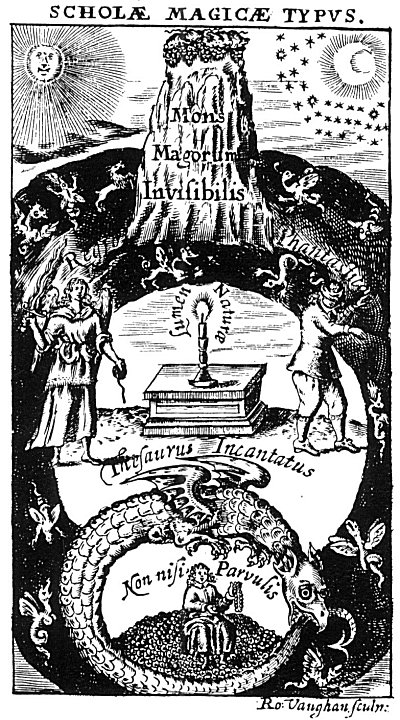
Eugenius Philalethes' Invisible Magical Mountain
The above hieroglyph accompanied Philalethes' Lumen de Lumine (1651). In it, Philalethes makes mention of Hali the Arabian, who is also mentioned by Paracelsus von Hohenheim in his The Book Concerning the Tincture of the Philosophers in the first chapter:
I, Phillippus Theophrastus Paracelsus Bombast, say that, by Divine Grace, many ways have been sought to the Tincture of the Philosophers, which finally all came to the same scope and end. Hermes Trismegistus, the Egyptian, approached this task in his own method. Orus, the Greek, observed the same process. Hali, the Arabian, remained firm in his order. But Albertus Magnus, the German, followed also a lengthy process. Each one of these advanced in proportion to his own method; nevertheless, they all arrive at one and the same end, at a long life, so much desired by the philosophers, and also at an honourable sustenance and means of preserving that life in this Valley of Misery.
Concerning the quote that Eugenius Philalethes makes (from Hali) in the monograph accompanying the above hieroglyph, we have: "Go, my son, to the mountains of India, and to their quarries or caverns, and take thence our precious stones, which dissolve or melt in water, when they are mingled therewith. Much indeed might be spoken concerning these mountains, if it were lawful to publish their mysteries, but one thing I shall not forbear to tell you. They are very dangerous places after night, for they are haunted with fires and other strange appairitions, occasioned (as I am told by the Magi) by certain spirits, which dabble lasciviously with the sperm of the world and imprint their imaginations in, producing many times fantastic and monstrous generations. The access and pilgrimage to this place, with the difficulties which attend them, are faithfully and magisterially described by the Brothers of R.C."
Lumen de Lumine

No comments:
Post a Comment